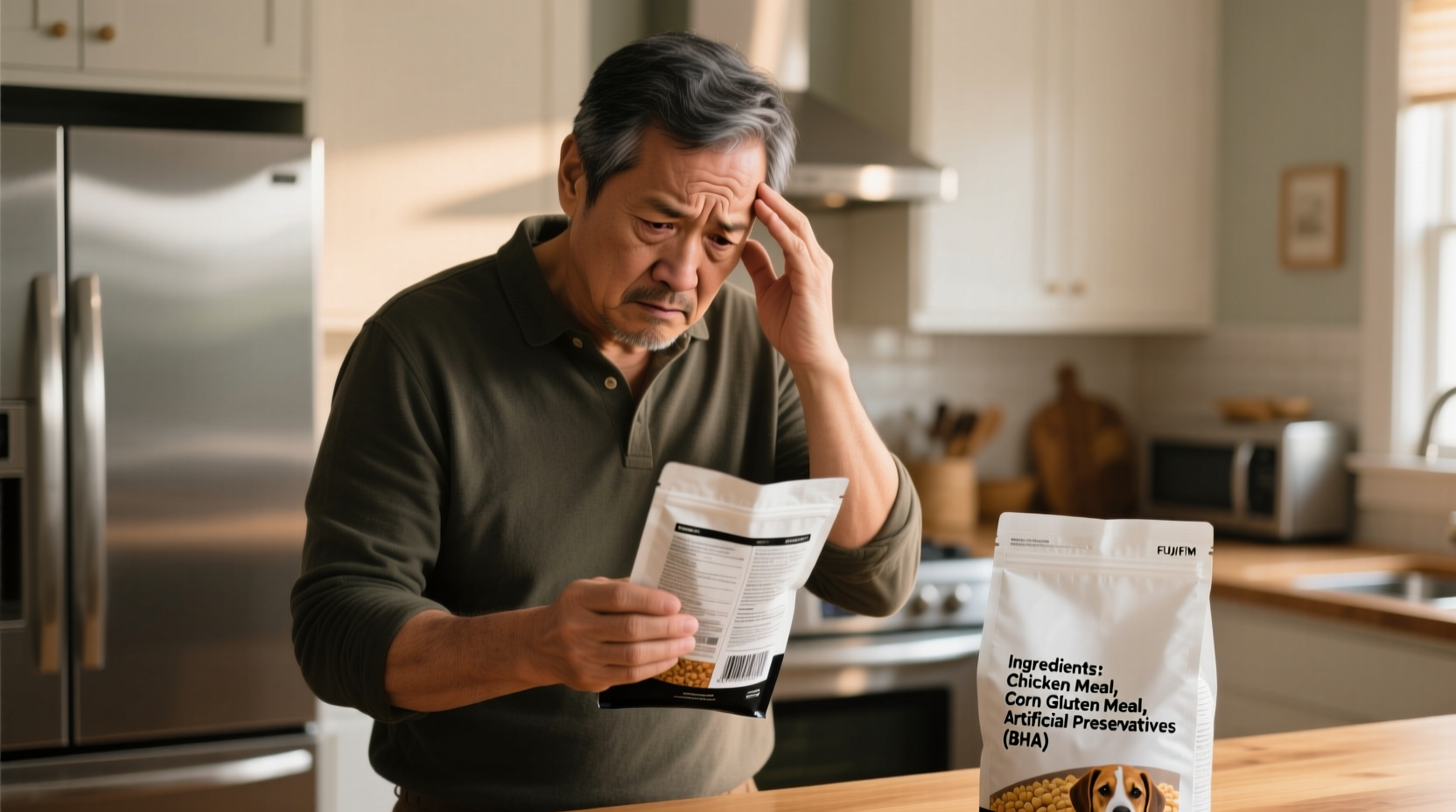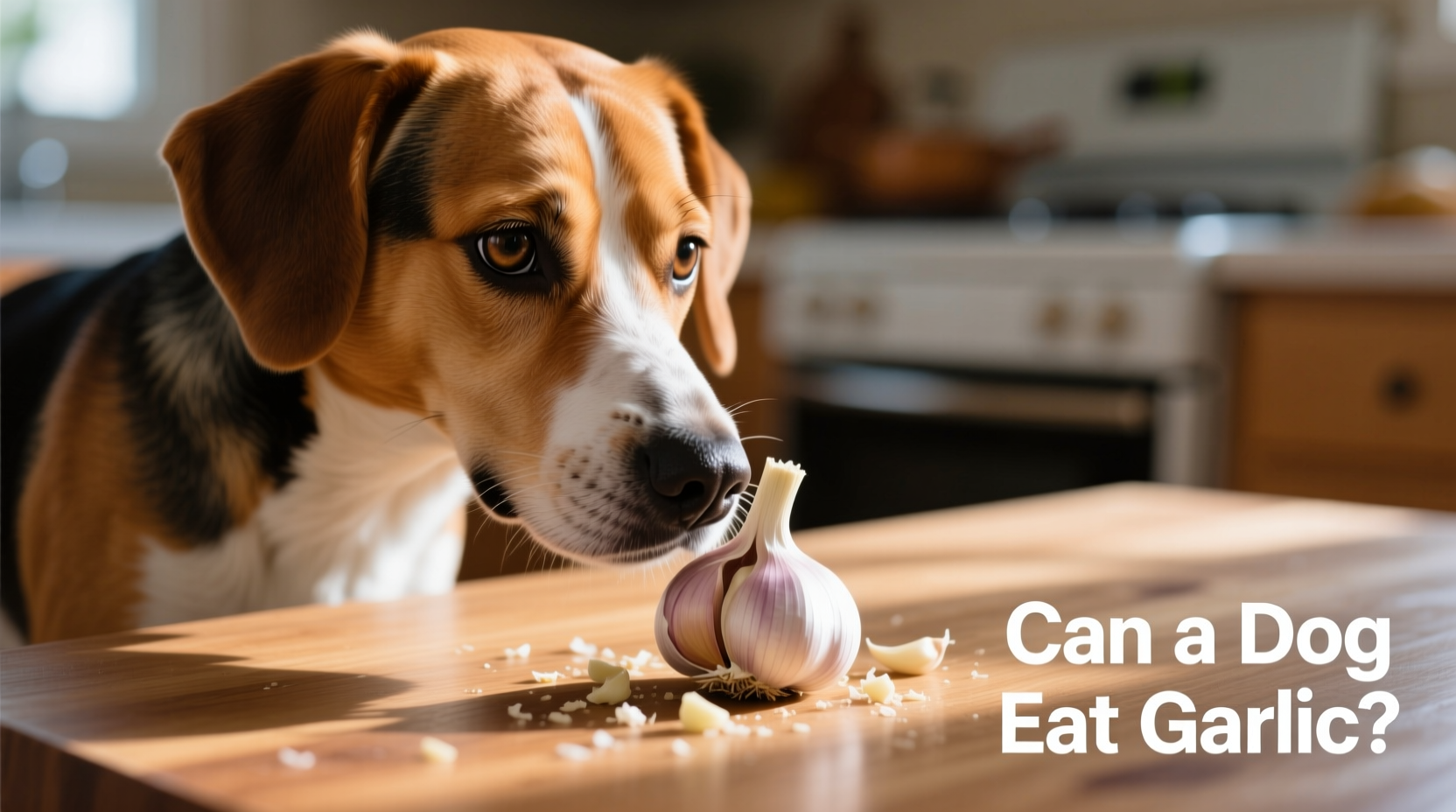As a dog owner, discovering your pet has eaten garlic can trigger immediate panic. Understanding the real risks and knowing exactly what to do could save your dog's life. This guide provides vet-verified information about garlic toxicity in dogs, including how much is dangerous, symptoms to watch for, and critical steps to take if exposure occurs.
Why Garlic Poses a Serious Threat to Dogs
Garlic belongs to the Allium family (which includes onions, leeks, and chives), containing compounds that are harmless to humans but toxic to dogs. The primary danger comes from N-propyl disulfide, which causes oxidative damage to red blood cells. When these damaged cells rupture (hemolysis), dogs develop hemolytic anemia, reducing oxygen delivery throughout the body.
Unlike humans, dogs lack sufficient enzymes to metabolize these compounds safely. The American Kennel Club reports that garlic is five times more toxic to dogs than onions. Certain breeds, particularly Japanese breeds like Shiba Inus and Akitas, show heightened sensitivity to Allium toxicity.
| Dog Weight | Garlic Amount | Risk Level |
|---|---|---|
| 10 lbs (4.5 kg) | 1 clove (5g) | High Risk |
| 50 lbs (23 kg) | 1-2 cloves (5-10g) | Moderate Risk |
| Any size | Garlic powder (0.5g) | Significant Risk |
Source: ASPCA Animal Poison Control Center dosage guidelines
Symptom Timeline: What to Watch For
Garlic toxicity symptoms often appear 24-72 hours after ingestion, making early detection challenging. The delayed reaction means damage is occurring internally before visible signs emerge:
- First 12 hours: Vomiting, abdominal pain, drooling (if large amount consumed)
- 12-24 hours: Lethargy, weakness, pale gums
- 24-72 hours: Dark urine (hemoglobinuria), rapid breathing, jaundice
- After 72 hours: Severe anemia requiring blood transfusion
According to veterinary research published in the Journal of Veterinary Pharmacology and Therapeutics, repeated small exposures (like daily garlic supplements) can cause cumulative toxicity that's often more dangerous than single large ingestions.
Hidden Sources of Garlic Danger
Many dog owners don't realize garlic appears in unexpected places beyond obvious culinary uses. These common household items pose significant risks:
- Commercial baby food (some varieties contain garlic for flavor)
- Homemade broth and stock
- "Natural" flea repellent supplements
- Leftover human meals (pasta sauces, dressings, gravies)
- Garlic powder in commercial dog treats (check labels carefully)
The American Veterinary Medical Association warns that garlic powder is 5-10 times more concentrated than fresh garlic, making even tiny amounts potentially dangerous. Always check ingredient labels on any human food before sharing with your dog.

Immediate Action Plan: Your Dog Ate Garlic
If your dog consumed garlic, follow these vet-recommended steps:
- Calculate exposure: Note the amount and form (fresh, powder, cooked) and your dog's weight
- Contact professionals immediately: Call your veterinarian or ASPCA Animal Poison Control (888-426-4435)
- Do NOT induce vomiting without professional guidance (could cause additional damage)
- Preserve evidence: Save packaging or food remnants for identification
- Monitor closely: Watch for early symptoms while awaiting professional advice
Veterinary treatment may include activated charcoal to absorb toxins, intravenous fluids, and in severe cases, blood transfusions. Early intervention significantly improves recovery chances.
Safe Flavor Alternatives for Dogs
If you want to enhance your dog's food with safe flavors, consider these veterinarian-approved options:
- Parsley (fresh, in small amounts)
- Basil (finely chopped)
- Cinnamon (tiny sprinkle for blood sugar regulation)
- Carrot or apple slices for natural sweetness
- Pumpkin puree (unsweetened) for digestive health
Always introduce new foods gradually and in moderation. Consult your veterinarian before adding any new ingredients to your dog's diet, especially if they have existing health conditions.
Preventing Future Garlic Exposure
Protect your dog with these practical prevention strategies:
- Store garlic and onions in closed cabinets away from curious noses
- Dispose of food scraps securely in latched trash cans
- Educate all household members about the dangers
- Avoid sharing human meals unless specifically dog-safe
- Read labels carefully on commercial dog foods and treats
Remember that garlic toxicity is preventable with proper awareness. Keeping garlic-containing foods out of reach protects your dog from unnecessary health risks.
Frequently Asked Questions
How soon after eating garlic will my dog show symptoms?
Symptoms typically appear 24-72 hours after ingestion, though vomiting may occur within hours of consuming large amounts. The delayed reaction makes early detection challenging as internal damage occurs before visible signs emerge.
Is cooked garlic safer for dogs than raw garlic?
No, cooking does not reduce garlic's toxicity. The harmful compounds remain active whether garlic is raw, cooked, powdered, or dehydrated. All forms pose equal danger to dogs regardless of preparation method.
Can garlic be used as a natural flea treatment for dogs?
No, garlic should never be used as a flea treatment. Despite popular myths, garlic supplements or garlic-based topical treatments pose significant health risks without proven flea-repelling benefits. Safer veterinary-approved alternatives exist for flea prevention.
Are some dog breeds more sensitive to garlic toxicity?
Yes, Japanese breeds including Shiba Inus and Akitas show heightened sensitivity to Allium toxicity. These breeds have genetic differences in red blood cell structure that make them more vulnerable to hemolytic anemia from garlic exposure.
How much garlic is dangerous for a dog?
As little as 15-30 grams of garlic per kilogram of body weight can cause toxic effects. For a 20-pound dog, this means just one clove (5 grams) could trigger poisoning. There is no established safe amount, so complete avoidance is recommended by veterinary professionals.











 浙公网安备
33010002000092号
浙公网安备
33010002000092号 浙B2-20120091-4
浙B2-20120091-4